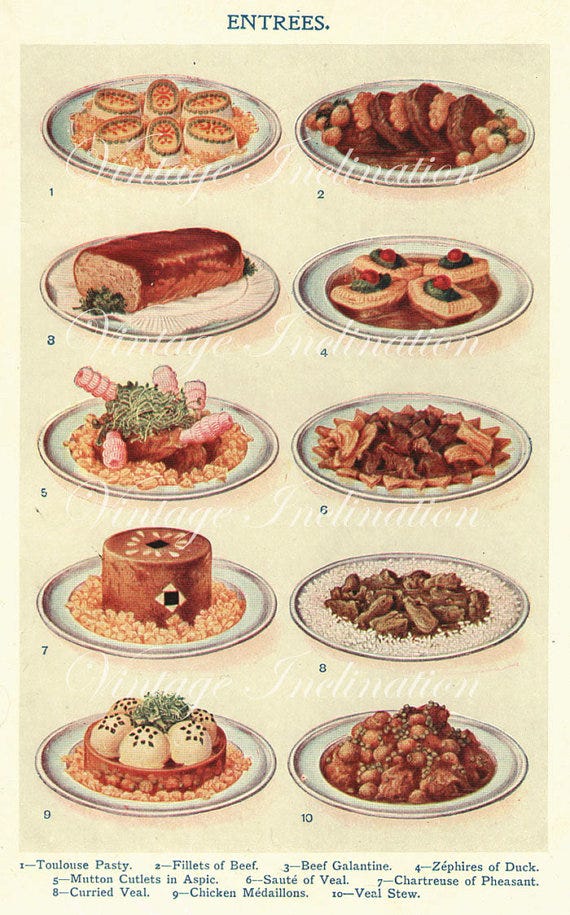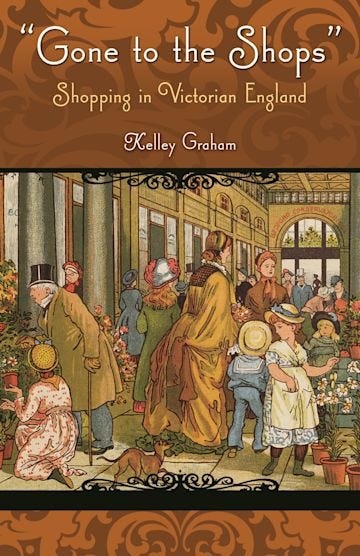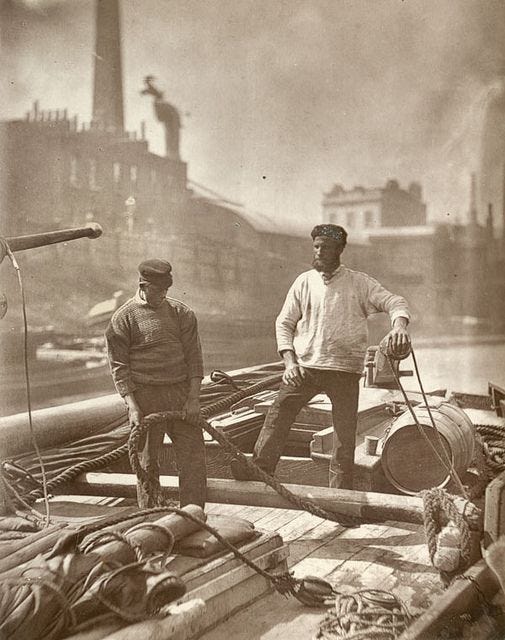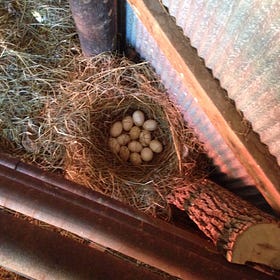We are fat and sick.
You have to be your own nutritionist. Finding a way for your people to be healthy unleashes an enormous amount of power. And if you want grandchildren, it is an essential—infertility is one of the diseases of modernity.
This is another $20 bill laying around on the sidewalk waiting to be picked up, or it would be if health information weren’t such a miasma.
One way to get healthy is mimetic health. Look at people who were actually healthy and try to do what they did.
It turns out one of those groups of people are the mid-Victorians, 1850-1880. In other words, our ancestors.
This transmission introduces you to the health and diet of English mid-Victorians. The first few parts summarize this publication https://ncbi.nlm.nih.gov/pmc/articles/PMC2672390/ (extending three articles from the Journal of the Royal Society of Medicine.) Then we discuss weaknesses in the publication and make practical suggestions for you and your charges.
Here is the bottom line: the mid-Victorians were much healthier than us, they ate more than us and worked more than us, and they consumed far more natural micro-nutrients.
How healthy were they?
From around 1850-1880, the English of all classes who survived the diseases of infancy had roughly modern lifespans. They achieved these lifespans despite having no antibiotics, almost no vaccines, and plenty of infectious diseases such as cholera, tuberculosis, and so on. They also presumably had a higher rates of outdoor accidents from manual labor, fewer safety devices, and primitive trauma surgery. Childbirth in particular was fraught with complications for the mother. Despite all that, their adult life expectancies were similar to our own.
Their rates of degenerative disease was about 10% of our own. Cancer, for example, was uncommon, and usually less fatal than ours.
They worked enormously. They ate about twice as many calories as they do to keep up with all their exertion. Even office workers walked and walked.
The mid-Victorian workers did an enormous amount of work. If John Henry were mid-Victorian, he would have just about won that duel.
The mid-Victorian navvies, who as day laborers were towards the bottom end of the workforce financially, could routinely shovel up to 20 tons of earth per day from below their feet to above their heads. This was an enormous physical effort that required great strength, stamina and robust good health. Within two generations, however, male health had deteriorated to such an extent that by 1900, half of the volunteers for the second Boer War had to be rejected because they were so undernourished.
What did they eat
A lot. As pointed out above, much more than we do. The following diet would have been typical for common people including working class families..
A number of vegetables including storable ones like onions, cabbage, Jerusalem artichokes, carrots, and turnips
Fruit in season, apples for more than half the year since they stored well, dried fruit and candied peel.
8-10 portions of fruits and vegetables a day.
Legumes were a staple.
Nuts in season.
Lots of oily fish, mostly consumed fresh with the head and the roe being eaten. Herring was a staple.
Roast was at least a weekly meal for all but the very poorest. Meat on the bone and offal were cheap and widely eaten. All animals free range and, it appears, mostly freshly butchered.
Fresh eggs, drippings, and hard cheeses.
Very moderate amounts of very weak beers.
Tobacco would have been intermittent, mostly pipe smoking
Less salt? (see below).

They conclude that the average mid-Victorian consumed around 10 times the micronutrients and phytonutrients we consume today.
10 times the micronutrients and phytonutrients we consume today
There was a pretty shocking decline in health beginning around 1880 in Britain, which the authors attribute to lots more sugar, lots more imported canned meats and canned fruits instead of fresher meats and fruits, higher salt and preservative consumption, manufactured cigarettes, a big fall in the cost of alcohol, and perhaps margarine.
Their Conclusion
Micronutrient malnutrition is the probable main cause of degenerative and lifestyle diseases.
Their Advice
Take a good broad spectrum supplement.
Hmm
Let's unpack this. First, some criticisms.
In the body of the paper the authors admit that meat was a big part of this incredibly healthy diet. In the abstract and the conclusions they downplay it. It doesn't seem to fit the template they have.
All the walking and other work may also have been a contributor to the mid-Victorians robust good health directly, not just because it allowed them to eat more and therefore get more micronutrients.
Their evidence for less salt consumption seems strained.
At table, salt was not usually sprinkled on a serving but piled at the side of the plate, allowing consumers to regulate consumption in a more controlled way.
The fall-off-a-cliff decline in British health after 1880 appears to be quite dramatic and deserves more exploration.
What can you do about it?
First, you can make your food more full of goodness for you and your family.
Second, you can supplement.
Biocapital investments pay off for a lifetime. Healthy people are happy people. Healthy, happy people make long term sustainable decisions and are willing and able to think in terms of lifetimes. Feeble people can only do feeble things.
Biocapital investments pay off for a lifetime. Healthy people are happy people. Healthy, happy people make long term sustainable decisions and are willing and able to think in terms of lifetimes. Feeble people can only do feeble things.
Healthier Food
Mainstream agriculture is a micronutrient desert. Therefore
Grow your own food and raise your own animals. Keep their inputs out of the micronutrient desert as much as possible. But even poultry mostly raised on a commercial feed that is only supplemented by a little free-ranging and table scraps are healthier and have better micronutrients. You can tell just by comparing their eggs with what you buy.
For your garden or your pasture or your orchard use compost with a wide variety of inputs by preference over natural fertilizers such as bone meal or guano, and use natural fertilizers by preference over chemical fertilizers. There is a loss of micronutrients at each stage.
Composting Your Family
·Sometimes when you are laying down a rich mixture of experiences, good health, and rewards, such as
liver, offal, innards, giblets. These are a huge advantage to raising your own animals, but source them however you can.
Storing Nutrition
·Deep Nutrition Food—We believe in deep nutrition. Bone broth, offal, heirloom vegetables grown in non-depleted soil, pasture eggs. We believe in it for practical reasons. Once you start eating nutritious food, you find your health improving. You find the flavor satisfying. Once you start eating nutritious food, you find yourself craving it.
Buy food from people you trust whose growing process you understand. This often means "buy locally" but not always.
learn how to safely store the food that you grow or raise
Even the most dedicated homesteader, everyone who isn't a Greg Jeffers, will also end up buying foods from the micronutrient desert. It is possible to find some foods that are better than others. Some parts of the desert are only semi-arid. There are even oases.
buy less processed foods and do your own cooking
eat a variety. Clear your diet of highly processed overly palatable foods so that your own bodily signals can emerge clearly, then pay attention to your body. If you crave liver, or a particular vegetable, etc., eat it.
Prioritize red meat. Chicken and poultry can be raised economically purely on micronutrient-desert foods, but cattle and sheep will start out life grazing. The end result won't be ideal, but it will still be better.
make bone broth from red meat animals or animals that are raised well
Bone Broth
·In this transmission we talk about bone broth, the why and the how. It is easy to make and delicious. As always with the Steader, we start with the assumption that you want regenerative personal health embedded in a healthy, regenerative family and community.
Ferment foods
Sauerkraut
Past cooking meals in all their wonderful variety, the easiest forms of home food production are making extracts (put stuff and alcohol in jar, wait) and fermentation.
eat wild-caught oily fish such as herring, sardines, mackerel, or salmon. Two words of caution. Unlike the mid-Victorians, your fish are probably a little contaminated. Especially the larger fish such as tuna, mackeral, or salmon. Mercury poisoning is real, you don't want to make these the mainstay in your diet. Also unlike the mid-Victorians, some of your fish options are likely canned, not fresh. For these reasons, make them a monthly or fortnightly thing, not a daily thing. But do make them a thing.
Supplement micronutrients
Why do the authors recommend a supplement instead of the above?
Because they think its impossible for you to get the same nutrient load that the mid-Victorians had on diet alone.
They have three reasons.
First, the mid-Victorians' food was less nutritionally dense. It had more fiber, for example. This means they had to eat more (and therefore consumed for micronutrients) to get a specified amount of calories. The idea is that three pears then have the same calories as two pears now, but eating only two pears gives you only two pears' worth of micronutrients. If you force yourself to eat a third pear for the micronutrients you are going to get fat.
Second, the mid-Victorians had higher calory needs than we do. That means they ate more, which means they got more micronutrients. You are eating two pears, but they ate six. if you are forcing yourself to eat six for the micronutrients, you are going to get fat
[One explanation for the obesity crisis is that you eat more because you aren't micronutrient-sated.]
Third, their food had more micronutrients than ours. The high productivity of industrial farming leads to much lower densities of micronutrients. Your two pears have about one pear's worth of micronutrients. Their six pears had six pears' worth.
This doesn't mean that you should abandon all attempts to improve your nutrition naturally. No supplement can cover all the bases because we don't even know what all the bases are. The micronutrients we know about should be seen as indicators, not a complete list of everything your body could possibly need.
Supplement recommendations
We won't make a supplement recommendation here. Good luck. We do recommend something that includes magnesium and thiamine, based both on personal experience and on this intriguing line of research. Your suggestions welcome.

















One thing more i might add to this is that toxins sometimes increase the bodies demands for nutrients. For example copper is toxic above small quantities, and zinc is central to the body's system of dealing with it. If heavy metal increased in the soil due to industrialization at the same time it was being depleted, it could be a double whammy.
Early trains burned coal. Coal has some metal content in it. The soot will settle.
Great read! I wonder how much transportation changed in the late 1800s too. That is - memetically at least - when trains really started taking hold.